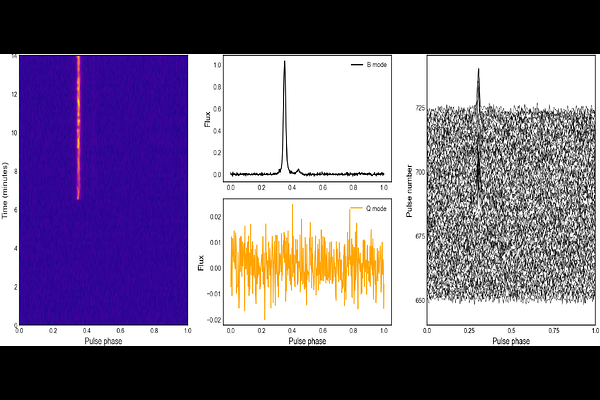Long-term Timing Results of Ecliptic Pulsars Observed with I-LOFAR

Long-term Timing Results of Ecliptic Pulsars Observed with I-LOFAR
S. C. Susarla, O. A. Johnson, D. J. McKenna, E. F. Keane, P. J. McCauley, J. P. W. Verbiest, C. Tiburzi, A. Golden
AbstractPulsar timing at low frequencies offers a powerful tool for studying the interstellar medium. Additionally, pulsar observations in the ecliptic enables us to study the effects of the solar wind which becomes much more prominent at low radio frequencies. The Irish station of the LOw Frequency ARray (I-LOFAR) is a sensitive low-frequency radio telescope, capable of delivering high-precision data for pulsar studies. We present a comprehensive dataset of times-of-arrival, timing solutions and dispersion measure (DM) time series for seven ecliptic pulsars observed over two-to-three years with I-LOFAR. The primary objectives are to investigate time-dependent dispersion effects and provide high-precision timing data for pulsar timing experiments. We measure DM variations through pulsar timing and analysed these across different ecliptic latitudes to assess the impact of the solar wind on each pulsar. We model the intrinsic pulse-profile variability as a function of frequency. The high-precision DM time series for all seven pulsars exhibit clear variations dependent on their ecliptic latitudes, revealing the impact of the solar wind. Some pulsars show significant changes in their pulse widths across the frequency band, while others remain stable. We examine and quantify the pulse-nulling present in PSR J0826+2637, we report evidence for DM chromaticity in PSR J1645-0317, and we describe how PSR J2145-0750's DM precision is such that it could resolve the ionospheric DM contribution. This makes it a target of interest for telescopes in areas of the globe where the ionospheric electron density is higher, e.g. the Murchison Radio Observatory in Australia. This data release underscores the potential of I-LOFAR, or any standalone international LOFAR station, for advancing low-frequency pulsar studies, particularly in analyses of dispersion in the interstellar medium, the solar wind and the ionosphere.